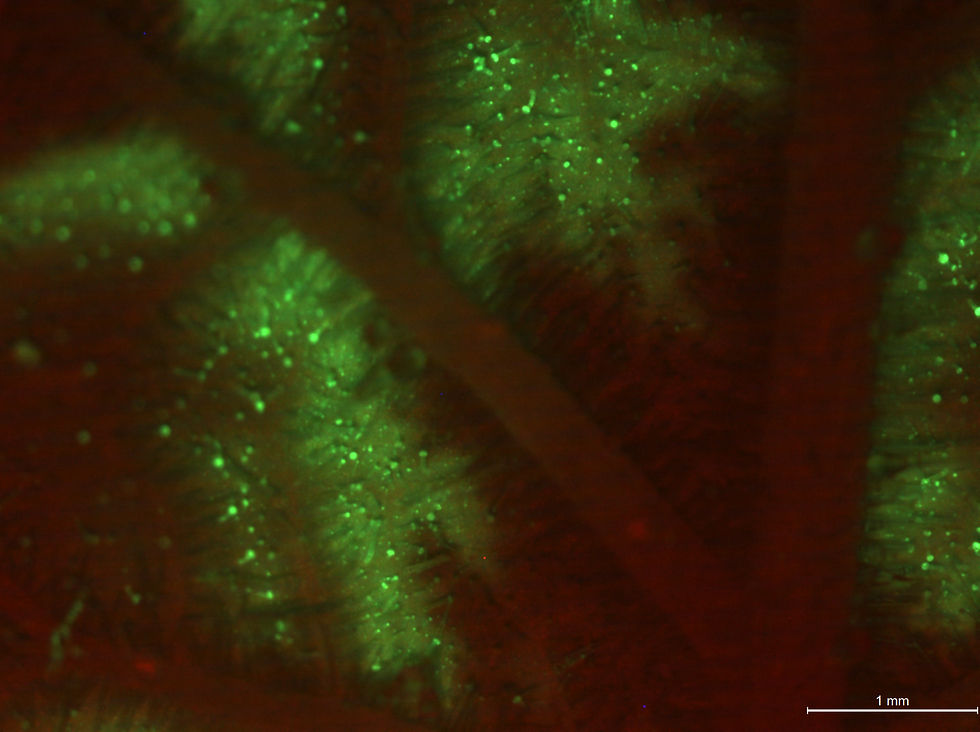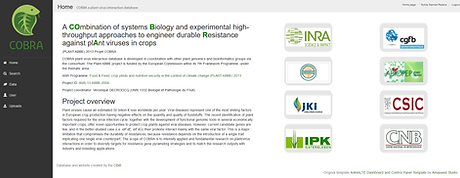



ABOUT ME
Micro-organisms, evolution and consequences
My research is dedicated to explore virus evolution by experimental approaches with touch of modelisation.
How virus can overcome amiRNA resistance ?
What is the dynamic of infection ?
Are genes in a same organism have the same evolution rate ? How to measure it ?
Is it advantagous to be specialized to a particular host ?
Are some of different subject I worked on, in collaboration or as personal project.
ONGOING PROJECTS

INTRINSICALLY DISORDERED DOMAINS AND ADAPTATION
Intrinsically disordered proteins (IDPs), i.e. proteins lacking a unique 3D structure and yet capable of exerting important biological functions, challenge the so-called “structure-function relationship” dogma. RNA viruses have a large proportion of intrinsically disordered regions (IDRs) in their proteins. It has been proposed that IDRs, because of their weak topological requirements, possess a mutational robustness higher than that of ordered regions (ODRs), contributing to a rapid adaptation to environmental stresses, without excessive loss of fitness. Consequently, the high evolutionary potential of RNA viruses, and the high content in ID of their proteins, set the basis for assessing the contribution of ID to the mutational robustness in a context of host adaptation.

INFLUENCE OF HOST RESPONSE TO THE ENVIRONMENT ON VIRAL EVOLUTION.
Is the evolution of a viral population residing in a stress-free host significantly different from a population residing in a host subject to a changing environment?
The question here is whether in addition to the host genotype, its plasticity to adaptation to the environemnt also plays a role in the evolution of the viral population.

EFFECT OF GENETIC DRAFT ON DIVERSITY
Genetic draft (or hitchhiking effect) occur when an allele changes frequency because it is near another gene that is undergoing a selective sweep.
The bit-string model explore effect of genetic draft on the natural variability in a population and consequences during environmetal changes.

COMBINATORY OF SYSTEM BIOLOGY, EXPERIMENTAL HIGH-THROUGHPUT AND PROTEINS INTERACTIONS IN PLANT VIRUS
This database concern phytoviruses. It contains among others interactions of viral proteins with host factors, genomic (orthologs...), transcriptomic (in virus experiments) data of plant genes.
in collaboration with Marie Lefebvre and the CBiB - Université Bordeaux.

PRIMER DATABASE
Only available for INRA-Bordeaux.
in collaboration with Patrice Mora
PUBLICATIONS
COMPARATIVE ANALYSIS OF MUTATIONAL ROBUSTNESS OF THE INTRINSICALLY DISORDERED VIRAL PROTEIN VPG AND OF ITS INTERACTOR EIF4E
Conformational intrinsic disorder is a feature present in many virus proteins. Intrinsically disordered regions (IDRs) have weaker structural requirement than ordered regions and mutations in IDRs could have a lower impact on the virus fitness. This could favor its exploration of adaptive solutions. The potyviral protein VPg contains IDRs with determinants for adaptation
to its host plant. To experimentally assess whether IDRs are more resistant to mutations than ordered regions, the biologically relevant interaction between mutant libraries of both VPg and the eukaryotic translation initiation factor 4E (eIF4E) and their respective wild type partner was examined using yeast two hybrid assay. Our data shows that VPg is significantly more robust to mutations than eIF4E and as such belongs to a particular class of intrinsically disordered proteins. This result is discussed from the standpoint of IDRs involvement in the virus adaptive processes.
ASSESSING PARALLEL GENE HISTORIES IN VIRAL GENOMES
Background: The increasing abundance of sequence data has exacerbated a long known problem: gene trees and species trees for the same terminal taxa are often incongruent. Indeed, genes within a genome have not all followed the same evolutionary path due to events such as incomplete lineage sorting, horizontal gene transfer, gene duplication and deletion, or recombination. Considering conflicts between gene trees as an obstacle, numerous methods have been developed to deal with these incongruences and to reconstruct consensus evolutionary histories of species despite the heterogeneity in the history of their genes. However, inconsistencies can also be seen as a source of information about the specific evolutionary processes that have shaped genomes.
Results: The goal of the approach here proposed is to exploit this conflicting information: we have compiled eleven variables describing phylogenetic relationships and evolutionary pressures and submitted them to dimensionality reduction techniques to identify genes with similar evolutionary histories. To illustrate the applicability of the method, we have chosen two viral datasets, namely papillomaviruses and Turnip mosaic virus (TuMV) isolates, largely dissimilar in genome, evolutionary distance and biology. Our method pinpoints viral genes with common evolutionary patterns. In
the case of papillomaviruses, gene clusters match well our knowledge on viral biology and life cycle, illustrating the potential of our approach. For the less known TuMV, our results trigger new hypotheses about viral evolution and gene interaction.
Conclusions: The approach here presented allows turning phylogenetic inconsistencies into evolutionary information, detecting gene assemblies with similar histories, and could be a powerful tool for comparative pathogenomics.
COSTS OF CRISPR-CAS-MEDIATED RESISTANCE IN STREPTOCOCCUS THERMOPHILUS
CRISPR-Cas is a form of adaptive sequence-specific immunity in microbes.This system offers unique opportunities for the study of coevolution betweenbacteria and their viral pathogens, bacteriophages. A full understandingof the coevolutionary dynamics of CRISPR-Cas requires knowing themagnitude of the cost of resisting infection. Here, using the gram-positivebacterium Streptococcus thermophilus and its associated virulent phage 2972,a well-established model system harbouring at least two type II functionalCRISPR-Cas systems, we obtained different fitness measures based ongrowth assays in isolation or in pairwise competition.We measured the fitness cost associated with different components of this adaptive immune system: the cost of Cas protein expression, the constitutive cost of increasing immune memory through additional spacers, and the conditional costs of immunity during phage exposure. We found that Cas protein expression is particularly costly, as Cas-deficient mutants achieved higher competitive abilities than the wild-type strain with functional Cas proteins. Increasing immune memory by acquiring up to four phage-derived spacers was not associated with fitness costs. In addition, the activation of the CRISPR-Cas system during phage exposure induces significant but small fitness costs. Together these results suggest that the costs of the CRISPR-Cas system arise mainly due to the maintenance of the defence system. We discuss the implicationsof these results for the evolution of CRISPR-Cas-mediated immunity.